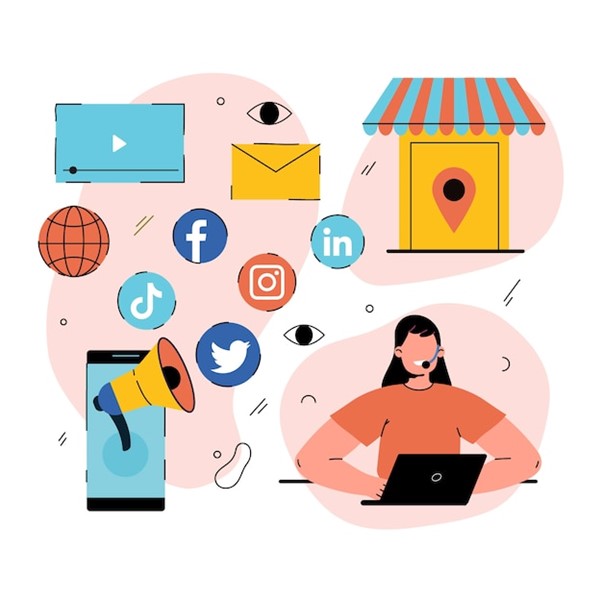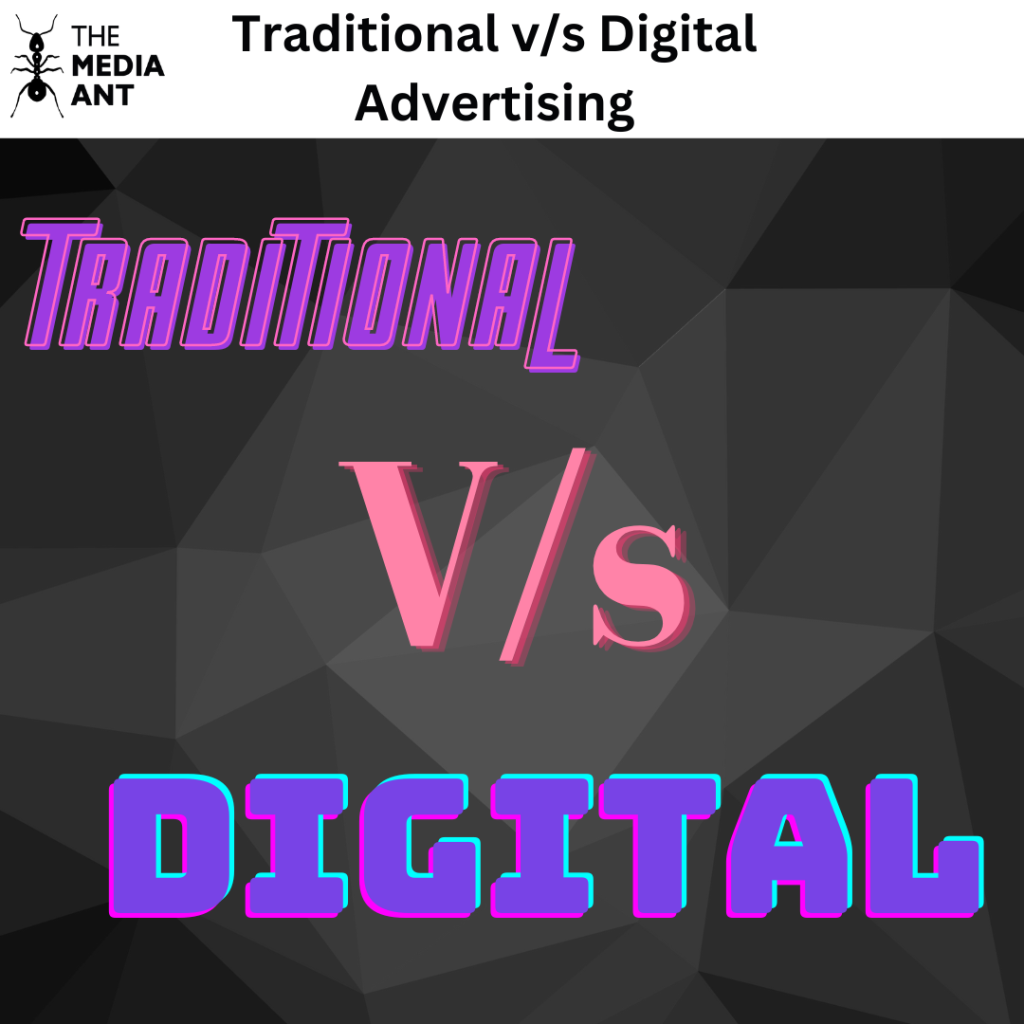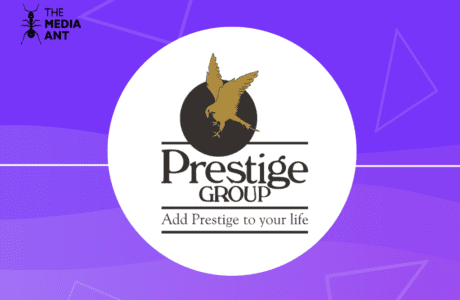Advertising has been around for a long time, much longer than most of us realize. In fact, the first advertisement was spread through word of mouth. It was most likely before recorded history. It’s hence, difficult to pin down exactly when the concept of advertising was put into practice.
If you take a look at advertisements from the past and present, you’ll notice not only has the concept of ads changed, but their forms have changed too. From sellers advertising their products verbally in ancient times to people consuming advertisements on social media, we have come a long way. To celebrate this journey of evolution and change, in this blog we will analyze both traditional and digital advertising and will see which one is most relevant to recent times.
Traditional v/s Digital is a debate that is going on forever. Which one is better? Which one would benefit the advertisers the most? These are some of the common questions that we hear on a daily basis. In this article, we will cover each and every aspect of comparison, similarities, and differences and will analyze thoroughly which one is best suited for your brand.
What is Traditional Advertising?

Traditional advertising refers to the use of traditional mediums such as television, radio, newspapers, magazines, and billboards to promote products or services. These mediums have been around for decades and have proven to be effective in reaching a large audience.

Why do Traditional Advertising?
Traditional marketing has a long history and has gained people’s trust and credibility with time. Remember “Nirma, washing powder Nirma….” I’m pretty sure you can complete this jingle right? Tv had that effect on us, and it’s not just about this one ad or jingle whenever a brand is looking to build brand awareness and reach a larger set of audience, traditional advertising is still a choice for most or at least a part of the campaign.
What is Digital Advertising?

Innovation needs to be part of your culture. Consumers are transforming faster than we are, and if we don’t catch up, we’re in trouble.” – Ian Schafer
Well, we agree with Ian, and that sums up the origin of digital advertising. Digital advertising refers to advertisements delivered through digital channels such as Search engines, websites, social media, email, mobile apps, text messaging, web-based advertising, etc.
Why do Digital advertising?
Consumers today rely heavily on digital means to research products. Some 77% of customers research a brand online before engaging with it, according to HubSpot Research. Meanwhile, 51% of consumers say they use Google to research products before buying.
Digital advertising uses a variety of tactics to contact customers, with the goal of persuading them to make a purchase, increasing brand recognition, or simply engaging with your brand.
Social media, content marketing, website marketing, SEO (search engine optimization), and PPC (pay-per-click) advertising are all examples of modern digital marketing channels.
Based on the data acquired over time, engagement marketing creates meaningful relationships with new and returning consumers by engaging customers in a digital landscape, increasing brand recognition, establishing yourself as a thought leader, and positioning your company at the forefront.
Difference between Traditional and Digital Advertising
| Comparison basis | Traditional advertising | Digital advertising |
| Definition | Traditional advertising refers to the use of traditional mediums such as television, radio, newspapers, magazines, and billboards to promote products or services. | Digital advertising is any form of advertising that appears online or on digital channels like websites, search engines, social media platforms, mobile apps, digital OOH, and other channels that can be accessed digitally. |
| Reach | Local | Global |
| Conversion rate | Less | High |
| Communication | One-way | Two-way |
| Expenses | More expensive | Less expensive |
| Results | Delayed result | Instant result |
Forms of Traditional Advertising

Are you feeling a little nostalgic for the good ‘ole days? You know, when you could flip through the pages of a magazine or watch a commercial on TV and get all the information you need about a product or service? Ah, traditional advertising. It’s a classic form of marketing that’s been around for ages, and it’s still alive and kicking today! So, let’s take a look at all the fun forms of traditional advertising out there that you can use to promote your business.
Television
Television advertising places your business on television through sponsored content, such as a commercial or an infomercial. These advertisements normally last for 30 seconds and include a combination of voice, text, and video, although they can occasionally run shorter or longer and may include celebrity endorsers or spokespeople to communicate a message.
Radio
Radio advertising is the practice of purchasing ad spots on popular radio stations to promote your products and services. Advertisers pay for every second of airtime, and the station broadcasts your radio commercials to its audience.
Newspapers
Print advertisements that appear in local, national, daily, or weekly news periodicals. Newspaper advertising has been around longer than any other type of advertising and is still considered as the most credible form of advertising.
Cinema
Cinema advertising refers to the on-screen and off-screen branding that customers see at theatres, which is often visible as a short audio-visual commercial before the film begins to posters in the cinema halls’ refreshments sections, and among other things.
Billboards
Billboard advertising is the practice of marketing a company, brand, product, service, or campaign by using a large-scale print advertisement (a billboard, or hoarding ). Billboards are often positioned in heavy traffic locations, such as highways and cities, to ensure that the greatest number of drivers and pedestrians notice them.
Telephone & SMS Marketing
The technique of sending marketing communications by text message is known as SMS marketing. It is a type of opt-in marketing in which contacts must subscribe. This distinguishes it from social marketing, in which the marketer uploads public material for others to like or follow.
Forms of Digital Advertising

Are you looking for a new way to get the word out about your business? Look no further than digital advertising! Whether you’re a small business or a large corporation, digital advertising has something for everyone. Below listed are a few forms of digital advertising that advertisers can use to promote their brand.
Social Media Marketing
Social media advertising is a form of digital advertising that uses social media platforms to promote a product, service, or brand. It can include sponsored posts, promoted tweets, or sponsored stories on platforms such as Facebook, Instagram, and Twitter. Social media advertising can be targeted to specific audiences based on demographics, interests, and browsing behavior.
Email Marketing
Email marketing is the act of sending a commercial message via email to a group of individuals. Email marketing may be defined broadly as any email delivered to a potential or present consumer.
Content Marketing
Content marketing is a marketing technique that uses relevant articles, videos, podcasts, and other media to attract, engage, and keep an audience. This strategy builds expertise, raises brand recognition, and keeps your company front of mind when it comes time to buy what you sell. Content marketing examples include media like newsletters, podcasts, social media posts, and videos.
PPC
PPC is an expression for pay-per-click, a digital advertising technique in which the advertiser pays a charge each time one of their adverts is clicked. Essentially, you’re paying for customized website traffic (or landing page or app).
Mobile Marketing
Mobile marketing is a multi-channel internet marketing method that focuses on contacting a specific audience through websites, e-mail, SMS, MMS, social media, or mobile applications on their smartphones, feature phones, tablets, or other similar devices.
Pros and Cons of Traditional Marketing
Traditional marketing remains a reliable way of advertising and promoting products. However, it has both pros and cons that businesses should consider when developing their marketing strategies.
Pros:
- Reach large audience: The pros of traditional marketing include the ability to reach a large audience, access to proven methods, and the ability to build relationships.
- Offers credibility: Traditional marketing establishes credibility and demonstrates stability and security.
Cons:
- Expensive: Traditional marketing can be quite expensive. The cost of TV or radio commercials, print ads, billboards, and other forms of traditional marketing can add up quickly.
- Lack of flexibility: Also the lack of flexibility can be considered as a con, as once any advertisement is out in the market you can make necessary changes if required.
Ultimately, the success of traditional marketing depends on the goals of the business. Going the traditional route can be expensive and it can be difficult to measure the success of a traditional campaign, as a lot of the response is based on anecdotal evidence and perceptions, but it can also deliver superior results if it is used correctly. Companies should weigh the pros and cons carefully before making a decision.
Pros and Cons of Digital Marketing
Pros:
1. Cost-effective: Digital marketing is much more cost-effective than traditional marketing as you don’t have to pay for printing materials or physical infrastructure.
2. Increased Engagement: The ability to interact with customers via social media and other digital platforms allows for increased engagement.
Cons:
1. Time-consuming: It can take a long time to plan, develop and execute a digital marketing strategy.
2. Lack of Control: You may not always have control over how people view your content or ads.
3. Too Much Information: Digital marketing can sometimes overwhelm people with too much information, it becomes almost impossible to retain information for a longer period of time.
FAQs Related to Traditional & Digital Advertising
How effective is traditional marketing?
Traditional marketing can be an effective way to reach potential customers, create brand awareness and promote products and services. With television, radio, and print advertising, companies are able to reach target audiences with relevant messages in an engaging way. Organizations can create an effective and comprehensive marketing strategy by combining traditional marketing with newer digital approaches.
How effective is digital marketing?
Digital marketing allows businesses and organizations to effectively target potential customers with relevant, useful, and engaging content. Through SEO, email campaigns, social media, and other digital channels, businesses and organizations can reach their target customers in a way that is more cost-effective and timely than traditional marketing tactics.
What is the difference between digital advertising and traditional advertising?
Traditional advertising and digital advertising are two different ways of promoting products or services. Traditional advertising uses mediums such as television, radio, newspapers, magazines, and billboards, while digital advertising uses digital mediums such as the internet, social media, mobile devices, and digital billboards. Digital advertising offers many advantages over traditional advertising, including lower costs, a more targeted reach, and the ability to track and measure the effectiveness of a campaign in real time.

What are the modern types of digital marketing?
With the rapid proliferation of technology, modern types of digital marketing have emerged, such as content marketing, social media marketing, search engine optimization, and email marketing.
- Content marketing involves creating and sharing content to attract customers, often through blogs, videos, e-books, and other forms of media.
- Social media marketing leverages platforms such as Twitter, Instagram, and Facebook to reach audiences and build relationships with customers.
- Search engine optimization (SEO) is a method used to maximize a website’s visibility in search engine results.
- Email marketing involves sending email newsletters and campaigns to subscribers in order to build relationships and promote products and services.
Each of these modern types of digital marketing can be used in combination to create effective campaigns for businesses.






Great read regarding the differences between these types of advertising methods for continued business success. Thanks for this.